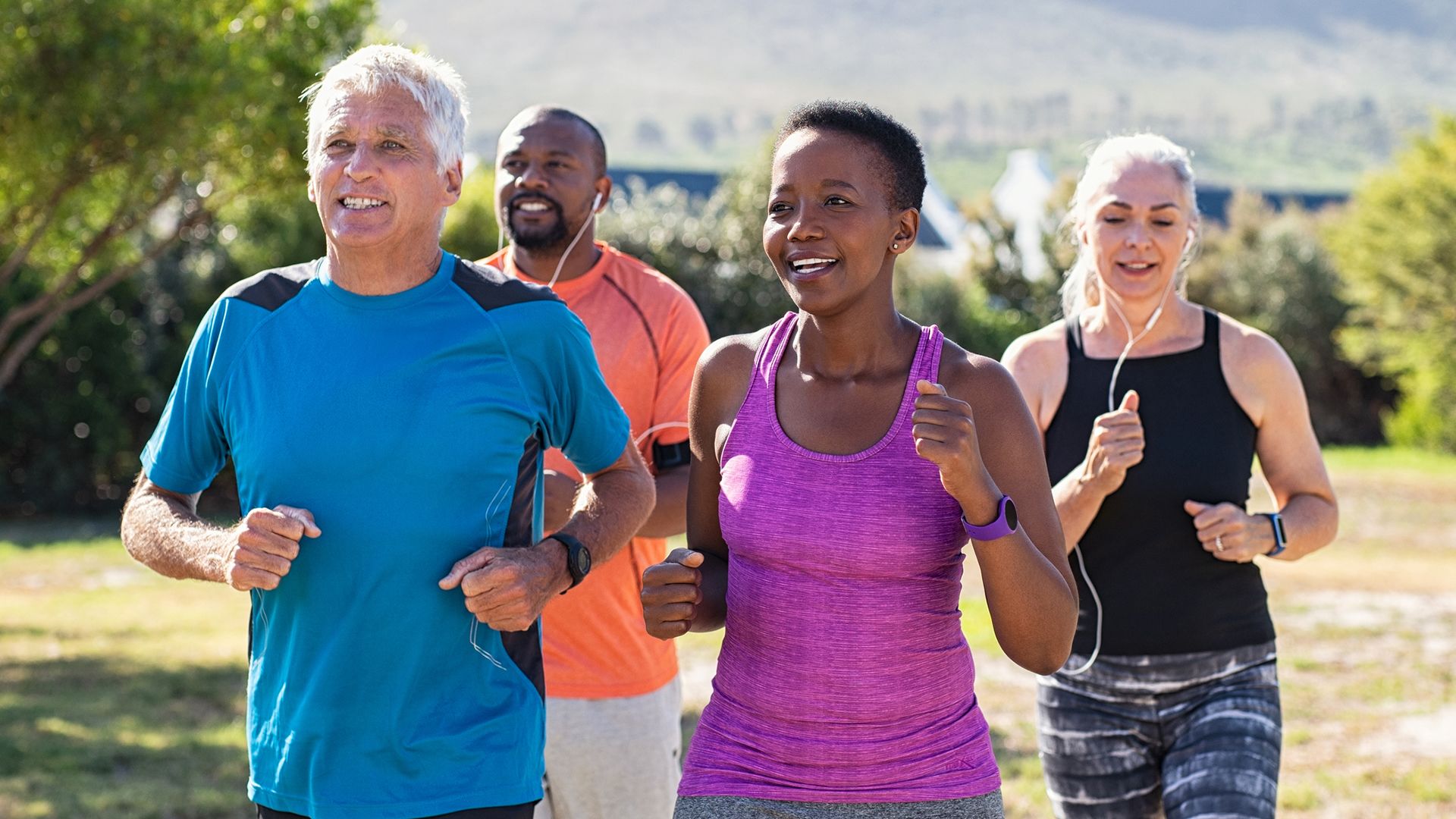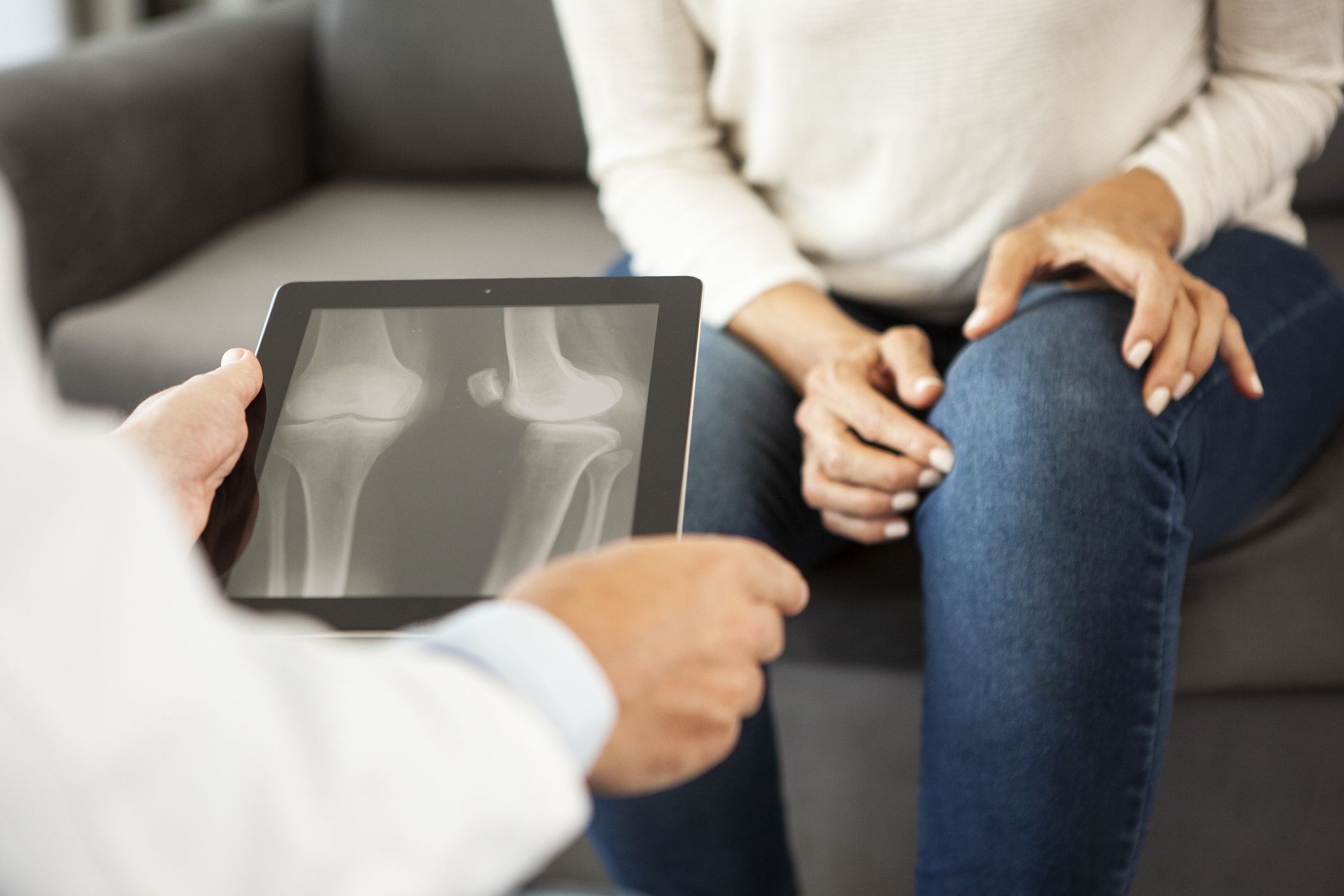Updated on July 18, 2023
Did you know that exercising regularly is one of the best things you can do to relieve the pain and stiffness of knee osteoarthritis? In fact, it’s one of the core components of treatment, along with medications and other lifestyle changes.
If you have difficulty with daily activities, such as getting out of a chair or walking, physical activity can help in multiple ways. For example, being overweight or obese is a risk factor for knee osteoarthritis and related disability because it puts extra stress on the joints. Regular exercise can help you lose weight and strengthens your muscles so that joints can more effectively absorb stress. Exercise also helps reduce your risk of injury from falls.
How much exercise do you need?
The Centers for Disease Control and Prevention (CDC) recommends that adults get at least 150 minutes of moderate intensity aerobic activity or 75 minutes of vigorous activity each week. Getting closer to 300 minutes of week of moderate exercise or 150 minutes of more strenuous activity is even better. The more exercise you get, the greater the health benefits.
According to a 2021 review of 19 studies published in Musculoskeletal Care, regularly following exercise programs like Pilates, strength training, and aerobics for three to five hours per week is a safe and effective way to reduce pain from knee osteoarthritis and build strength. And the effects are the same whether the exercise is land- or water-based.
If these numbers seem intimidating, remember that any amount of exercise is better than none. Short bouts of physical activity—even just a two-minute walk—count toward your weekly goal. If going to the gym or using a treadmill aren’t for you, consider that dancing, gardening, climbing stairs, and other low-impact activities all count as exercise that will help lower your risk of chronic health issues, like heart disease and diabetes.
Even if you’ve had a sedentary lifestyle up until now, you can reach your goals if you start adding in a little more exercise each day. Start low, go slow, and always check in with your body.
What are the best types of exercise for people with knee osteoarthritis?
Different kinds of physical activity can help manage and prevent knee pain.
Cardio activity. Low-impact aerobic activities can provide benefits without putting too much pressure or stress on your joints. Walking is an ideal activity for people with knee osteoarthritis because you can do it anywhere, without special equipment or a gym membership. Swimming or other water exercises are also typically safe for people with knee osteoarthritis.
According to the Arthritis Foundation, moderate amounts of running and other types of strenuous exercise can be quite beneficial—if you go about it correctly. It’s very important to pay close attention to make sure your baseline pain isn’t getting worse, and to make sure you can tell the difference between muscle soreness and arthritis pain. And be sure to pick up the right shoes for OA at a specialist running shoe store.
Range of motion and flexibility exercises. You may want to consider tai chi or yoga, both of which can help joints and enhance your ability to move. A 2020 review of studies published in the Journal of Clinical Medicine noted consistent improvements in pain, physical function, and stiffness from these practices.
It’s also a good move to regularly stretch your quads and your hamstrings. Keeping those big muscles in the front and back of your upper leg limber can improve flexibility in the knee.
Practicing your balance and agility skills can be helpful, too. One simple practice: At home, try walking backward or standing on one foot. Hold onto a railing or something else close by, as it can help prevent falls if you start to feel dizzy or unbalanced.
Strength training. The CDC recommends that adults do muscle-strengthening activities at least two days per week. Whether you use resistance bands or weights, these exercises are useful, because they strengthen the muscles that support your knee joints. Remember to warm up before you begin and take time to cool down afterward.
Using a resistance band to lift your leg is one effective strengthening exercise. Sit in a chair with a band looped around your legs right above the ankles. With one foot on the floor, slowly straighten your other leg into the air, hold the lift for six seconds, then relax. Repeat a few times, then switch legs. Work up to doing 8 to 10 repetitions on each side.
You can also try mini-squats. With feet shoulder-width apart, stand holding the back of a chair. Slowly bend your knees to a slight squat of a few inches. In this move, it’s key to avoid squatting too low and to make sure your knees stay behind your toes throughout the entire move. As you come back up to standing, tighten your buttocks. Start with a set of three to four squats, then add sets as you build strength, until you can do 8 to 10 repetitions.
What are the worst exercises?
According to the CDC, you should avoid any exercise or repetitive motion that involves frequent bending or twisting.
Remember to talk to your healthcare provider (HCP) before beginning an exercise program, particularly if knee pain is an issue for you. Your HCP can help you determine what you can do to start and how you can safely increase your activity level. They can refer you to a physical therapist for further help, as well.






